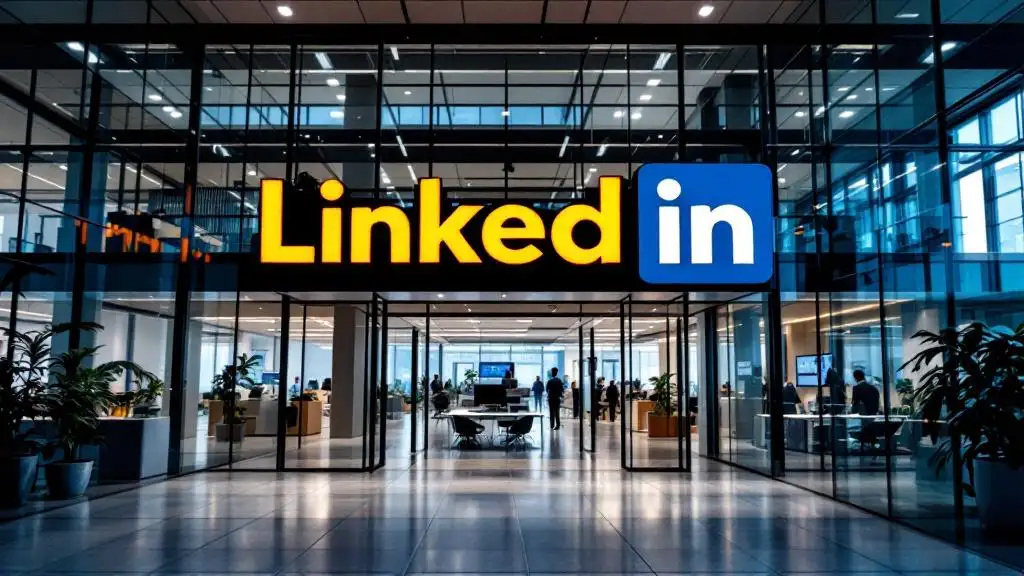Content Marketing Statistics in the Healthcare Industry
Healthcare brands have recognized the impact of content marketing in engaging their target audience and achieving their marketing goals.


Content Marketing Statistics in the Healthcare Industry
Successful Healthcare Marketing Strategies
In the ever-evolving landscape of healthcare marketing, content marketing has emerged as a successful strategy. Healthcare brands have recognized the impact of content marketing in engaging their target audience and achieving their marketing goals. According to a State of Content Marketing 2023 Global report, 99% of surveyed companies in the healthcare industry generated positive results with their content marketing efforts [1].
Impact of Content Marketing
Content marketing has proven to be a powerful tool for healthcare brands. It allows them to build trust, educate their audience, and establish themselves as thought leaders in their respective fields. By creating valuable and relevant content, healthcare brands can connect with their target audience on a deeper level, ultimately driving brand awareness, customer engagement, and conversions.
Diverse Content Types
A key aspect of successful healthcare content marketing is the utilization of diverse content types. Different content formats cater to different preferences and consumption habits of the audience. According to the aforementioned report, the top three most successful healthcare content types are video (37%), case studies (30%), and short-form articles (29%) [1].
By incorporating a mix of these content types, healthcare brands can effectively engage their audience and deliver information in various formats. Additionally, it is important to note that certain content formats are underutilized in the healthcare industry, such as podcasts, data visualizations, and quizzes. Exploring these formats can provide a competitive advantage and help healthcare brands stand out.
Visual Content Effectiveness
Visual content plays a crucial role in healthcare marketing. Articles with seven or more images tend to receive the most backlinks and organic traffic. Additionally, articles that include at least one video generate 70% more organic traffic compared to those without [1].
Incorporating visual elements such as images, infographics, and videos enhances the overall appeal and comprehension of the content. Visuals have the power to convey complex information in a digestible and engaging manner, making them an effective tool for healthcare brands to communicate their messages and capture the attention of their audience.
By understanding the impact of content marketing, utilizing diverse content types, and leveraging the effectiveness of visual content, healthcare brands can develop successful marketing strategies that resonate with their target audience. The ability to educate, engage, and inspire through compelling content allows healthcare brands to build strong relationships with their audience and drive positive outcomes.
Emerging Trends in Healthcare Marketing
As the healthcare industry continues to evolve, so does the field of healthcare marketing. Staying on top of emerging trends is crucial for effective marketing strategies. In this section, we will explore three prominent trends in healthcare marketing: voice search utilization, social media influence, and the importance of design and layout.
Voice Search Utilization
Voice search technology has gained significant traction in recent years, with 58% of people aged 25-40 utilizing voice search features on search engines AMNET. This indicates a growing trend towards voice-activated searches. Healthcare organizations should consider this shift in consumer behavior when developing their content marketing strategies.
To optimize content for voice search, healthcare marketers should focus on natural language and conversational tone in their content. This includes incorporating long-tail keywords, answering commonly asked questions, and creating content that aligns with voice search queries. By adapting to this trend, healthcare organizations can enhance their online visibility and improve accessibility for patients seeking information through voice search.
Social Media Influence
Social media has become a powerful tool for healthcare marketing, influencing consumer decisions in the healthcare industry. According to a study, 57% of consumers stated that a medical facility's social media presence strongly influences their choice regarding where to go for medical services AMNET. This highlights the importance of leveraging social media platforms to engage with patients and build trust.
Healthcare organizations should establish a strong social media presence by creating informative and engaging content. This can include sharing health tips, showcasing patient success stories, and providing updates about services and events. Social media platforms also offer opportunities for direct communication with patients, allowing healthcare providers to address inquiries, provide support, and foster a sense of community.
Importance of Design and Layout
In the digital age, the design and layout of healthcare websites and online platforms play a crucial role in attracting and retaining visitors. Research has shown that 38% of users will leave a website if the layout is unattractive or the content isn't engaging AMNET. This emphasizes the importance of maintaining an attractive and user-friendly online presence for healthcare organizations.
To create an engaging digital experience, healthcare marketers should focus on intuitive navigation, visually appealing design elements, and compelling content. A well-designed website that is easy to navigate and visually appealing can enhance user satisfaction and encourage visitors to explore further. Additionally, incorporating interactive features such as videos, infographics, and interactive tools can further engage and educate users.
By embracing these emerging trends in healthcare marketing, healthcare organizations can stay ahead of the curve and effectively reach their target audience. Voice search utilization, social media influence, and the importance of design and layout are all facets of a comprehensive marketing strategy that can enhance brand visibility, engage patients, and ultimately drive positive outcomes in the ever-evolving healthcare landscape.
Future of Healthcare Marketing
As the healthcare industry continues to evolve, so does the field of healthcare marketing. In this section, we will explore three key aspects that shape the future of healthcare marketing: telehealth integration, AI-powered marketing, and personalization challenges and solutions.
Telehealth Integration
Telehealth has emerged as a significant trend in recent years and is expected to continue its growth in the coming years [2]. With the advancement of technology and the increasing demand for convenient healthcare services, healthcare providers are urged to incorporate telehealth services if they haven't already and enhance existing services to meet patient expectations.
Telehealth integration enables healthcare organizations to reach patients in remote areas, provide virtual consultations, and deliver healthcare services through digital platforms. This convenient and accessible approach to healthcare resonates with patients who seek flexibility and convenience in their healthcare experience.
By incorporating telehealth into their marketing strategies, healthcare organizations can position themselves as modern and patient-centric, attracting patients who value convenience and accessibility. It is important for healthcare marketers to highlight the benefits of telehealth, such as reduced travel time, increased access to specialists, and the ability to receive care from the comfort of one's own home.
AI-Powered Marketing
Artificial Intelligence (AI) continues to revolutionize various industries, including healthcare marketing. AI-powered marketing is expected to be a prominent trend in the future of healthcare marketing [2]. By leveraging AI algorithms, healthcare marketers can analyze patient data and preferences to deliver personalized marketing campaigns that provide an improved user experience across various digital platforms.
AI-powered marketing enables healthcare organizations to segment their target audience more effectively, tailor messaging based on individual preferences, and optimize marketing efforts for better engagement and conversion rates. By understanding patient demographics, behaviors, and preferences, healthcare marketers can create targeted campaigns that resonate with specific audiences.
Additionally, AI can assist in automating various marketing tasks, such as data analysis, content creation, and campaign optimization. This allows healthcare marketers to focus on strategic initiatives and provide a seamless and personalized experience to their target audience.
Personalization Challenges and Solutions
Personalization is a significant challenge for healthcare marketers due to privacy regulations, such as the Health Insurance Portability and Accountability Act (HIPAA), which restrict the ability to provide tailored marketing content to consumers. However, there are solutions to overcome these challenges.
One way to address the lack of personalization is by focusing on preventative care. By providing educational content and resources related to preventive health measures, healthcare marketers can reach consumers with relevant messaging without compromising their privacy [3]. This approach allows healthcare organizations to engage with their target audience, establish trust, and position themselves as advocates for overall wellness.
Another solution is to implement an inbound marketing strategy that emphasizes useful and engaging content optimized for search, local SEO, and pay-per-click advertising with targeted audiences. This approach allows healthcare marketers to reach specific segments of the population with relevant content while complying with privacy regulations [3].
Furthermore, healthcare marketers can also target insurance companies with their marketing efforts. Understanding which providers and plans are accepted by healthcare organizations and crafting an inbound strategy for insurance companies can help healthcare marketers navigate the unique challenges related to insurance providers' influence over consumer decisions [3].
As healthcare marketing continues to evolve, integrating telehealth, leveraging AI-powered marketing, and finding creative solutions for personalization challenges will be crucial for healthcare organizations to stay ahead in the competitive landscape. By embracing these future trends, healthcare marketers can effectively engage with their target audience, deliver personalized experiences, and drive positive health outcomes.
Overcoming Healthcare Marketing Challenges
Effectively navigating the healthcare marketing landscape requires addressing various challenges that arise in the industry. This section explores three key challenges and provides insights on how to overcome them: HIPAA compliance in marketing, public perception management, and investment and ROI tracking.
HIPAA Compliance in Marketing
The Health Insurance Portability and Accountability Act (HIPAA), enacted in 1996, is a federal law that mandates the protection and confidential handling of health information for patients in the United States. HIPAA has profound implications for healthcare marketing strategies, particularly regarding data utilization. Its regulations limit how healthcare providers and their associates, including marketers, can use and share patient data.
One of the significant ways HIPAA affects a marketing strategy is through its restrictions on targeting methods. HIPAA rules prohibit using Protected Health Information (PHI) for marketing purposes without explicit patient consent. Marketers must ensure that any patient information used in their campaigns is de-identified and compliant with HIPAA regulations. This involves removing any direct identifiers, such as names, addresses, and specific health conditions, to protect patient privacy and maintain compliance.
To overcome HIPAA compliance challenges in healthcare marketing, marketers should prioritize obtaining patient consent, and ensure that their marketing efforts align with the regulations set forth by HIPAA. By implementing robust data management practices and working closely with legal and compliance teams, healthcare marketers can confidently navigate the regulatory landscape while still delivering effective marketing campaigns.
Public Perception Management
The healthcare industry faces public perception challenges, with growing ambivalence and dissatisfaction among consumers. Building trust with prospective patients is crucial in overcoming these challenges. Healthcare providers can employ various strategies to manage public perception and establish a positive brand image.
Thought leadership campaigns play a significant role in shaping public perception. By positioning healthcare professionals as industry experts through informative and authoritative content, organizations can build trust and credibility. Sharing success stories, patient testimonials, and engaging in open dialogue with the community can also help foster positive perceptions.
In the digital era, online reviews and testimonials hold considerable influence. Encouraging satisfied patients to share their experiences can enhance the reputation of healthcare organizations. Engaging with patients on social media platforms and responding to their inquiries or concerns in a timely and empathetic manner can further strengthen public perception.
Humanizing healthcare organizations is another effective strategy. Sharing stories of healthcare providers, their dedication, and the impact they have on patients' lives can help create a connection and build trust. By showcasing the compassionate and caring side of the healthcare industry, organizations can reshape public perception and foster positive relationships with their audience.
Investment and ROI Tracking
Limited investment in marketing poses a challenge in the healthcare industry, with professionals often struggling to see the value of marketing to prospective patients. To overcome this challenge, healthcare marketers need to focus on data-driven decision-making and track return on investment (ROI) effectively.
By conducting thorough keyword research and utilizing tools like Google Analytics, marketers can gain valuable insights into their marketing efforts. They can identify the most effective channels, keywords, and campaigns that drive the highest ROI. This data-driven approach allows them to allocate resources strategically and optimize their marketing strategies.
Marketing automation tools can also help demonstrate the value of digital marketing efforts by tracking and analyzing key performance metrics. These tools provide comprehensive reports on website traffic, conversions, and engagement metrics, enabling healthcare marketers to showcase the impact of their campaigns and justify their investment.
To overcome the challenge of limited investment, healthcare marketers should focus on educating stakeholders about the potential benefits of marketing, emphasizing the importance of reaching and engaging with prospective patients. By presenting data-backed insights and showcasing the positive outcomes achieved through marketing efforts, marketers can demonstrate the value and impact of their work, leading to increased support and investment.
By addressing these challenges head-on and implementing effective strategies, healthcare marketers can navigate the complexities of the industry and achieve success in their marketing initiatives.
Targeting Specific Healthcare Audiences
In healthcare marketing, it is essential to tailor strategies to specific target audiences to maximize effectiveness. This section explores three key audiences: baby boomers, patients in terms of retention, and seniors.
Marketing to Baby Boomers
Baby boomers, born between 1946 and 1964, represent a significant demographic in healthcare marketing. As they age, their healthcare needs increase. By 2030, baby boomers are projected to require more healthcare than any other generation, accounting for more than twice as many hospital admissions as currently [4].
To effectively market to baby boomers, healthcare organizations need to understand their unique needs and preferences. This generation tends to be more active online, making digital marketing channels crucial. Baby boomers value personalized and relevant content that addresses their specific health concerns and challenges. Educational content, testimonials, and case studies can be effective in building trust and establishing credibility.
Patient Retention Strategies
While attracting new patients is important, retaining existing patients is equally crucial for healthcare organizations. Marketing efforts should focus on developing patient retention strategies to foster long-term relationships and encourage positive word-of-mouth referrals.
Effective patient retention strategies include personalized communication, ongoing engagement through email newsletters or social media, and providing exceptional patient experiences. By delivering high-quality care and maintaining open lines of communication, healthcare organizations can improve patient satisfaction and loyalty.
Marketing to Seniors
Marketing to seniors requires a delicate approach and tailored methods compared to marketing to younger demographics. Seniors have unique healthcare needs and may require targeted messaging and strategies to attract and engage them [4].
When marketing to seniors, it's important to consider their preferred communication channels, which may include traditional media such as television and print. Additionally, focusing on educating seniors about preventative care and the importance of regular check-ups can be effective in capturing their attention and motivating them to seek healthcare services.
To establish trust and credibility, healthcare organizations should highlight testimonials and success stories from senior patients. Providing clear and easily accessible information about services, insurance coverage, and appointment scheduling is also crucial for seniors who may have specific needs and preferences.
Implementing a comprehensive healthcare marketing plan that encompasses various target audiences, including baby boomers, patients, and seniors, requires a tailored approach for each group. By understanding the unique characteristics, needs, and preferences of these audiences, healthcare organizations can develop effective marketing strategies that resonate with their target demographics.
Innovative Healthcare Marketing Approaches
To stay ahead in the ever-evolving healthcare industry, healthcare marketers have embraced innovative approaches to effectively reach and engage their target audiences. In this section, we will explore three key innovative healthcare marketing approaches: thought leadership campaigns, humanizing healthcare organizations, and value demonstration in marketing.
Thought Leadership Campaigns
Thought leadership campaigns have become a powerful tool for healthcare marketers to establish their brands as industry leaders. By leveraging original research data and translating it into actionable tips, healthcare brands can enhance their authoritativeness and set themselves apart from competitors [5].
Thought leadership campaigns involve creating and disseminating high-quality content that showcases expertise, insights, and trends within the healthcare industry. This can be achieved through various channels such as blogs, white papers, webinars, and social media. By sharing valuable knowledge and providing solutions to common healthcare challenges, thought leadership campaigns position healthcare organizations as trusted resources, building credibility and fostering long-term relationships with their target audience.
Humanizing Healthcare Organizations
In an industry often perceived as clinical and impersonal, humanizing healthcare organizations can make a significant impact on patient engagement and loyalty. By showcasing the human side of healthcare, organizations can build trust and connect with their audience on a deeper level.
To humanize their brand, healthcare organizations can share patient success stories, testimonials, and behind-the-scenes glimpses of their staff and facilities. This approach helps to create an emotional connection, reassuring patients that they are cared for and understood. Additionally, utilizing empathetic and relatable language in marketing materials can further enhance the human touch.
Today, digital platforms provide ample opportunities to humanize healthcare organizations. Social media platforms, in particular, offer a space to engage in two-way conversations, respond to patient queries, and share valuable health information in a personable manner. By showcasing the people behind the healthcare organization and fostering meaningful connections, humanizing healthcare organizations can have a profound impact on patient satisfaction and loyalty.
Value Demonstration in Marketing
Value demonstration is a crucial aspect of healthcare marketing. In an industry where patients have a plethora of choices, healthcare organizations need to effectively communicate the value they provide to their target audience. This can be achieved by highlighting the unique benefits, expertise, and outcomes that set them apart from their competitors.
To demonstrate value, healthcare organizations can emphasize factors such as clinical excellence, patient satisfaction rates, cutting-edge technology, specialized services, and positive patient outcomes. By utilizing data and statistics, they can provide tangible evidence of their value proposition. This can be done through case studies, testimonials, infographics, and comparative studies.
Furthermore, healthcare organizations can focus on preventative care messaging as a way to reach consumers with relevant content without compromising their privacy in light of HIPAA regulations. By educating and empowering individuals to prioritize their health and well-being, healthcare organizations can position themselves as partners in their patients' overall health journey.
By adopting thought leadership campaigns, humanizing their organizations, and effectively demonstrating their value, healthcare marketers can create impactful and engaging marketing strategies that resonate with their target audience. These innovative approaches contribute to establishing a strong brand presence, fostering patient trust, and driving long-term success in the healthcare industry.
References
[1]: https://www.semrush.com/blog/healthcare-content-marketing/
[2]: https://www.weareamnet.com/blog/healthcare-marketing-trends/
[3]: https://www.o8.agency/blog/6-healthcare-marketing-challenges-and-how-solve-them
[4]: https://www.webfx.com/industries/health/hospitals-healthcare/target-marketing-in-healthcare/
[5]: https://www.clearvoice.com/resources/healthcare-content-marketing/







